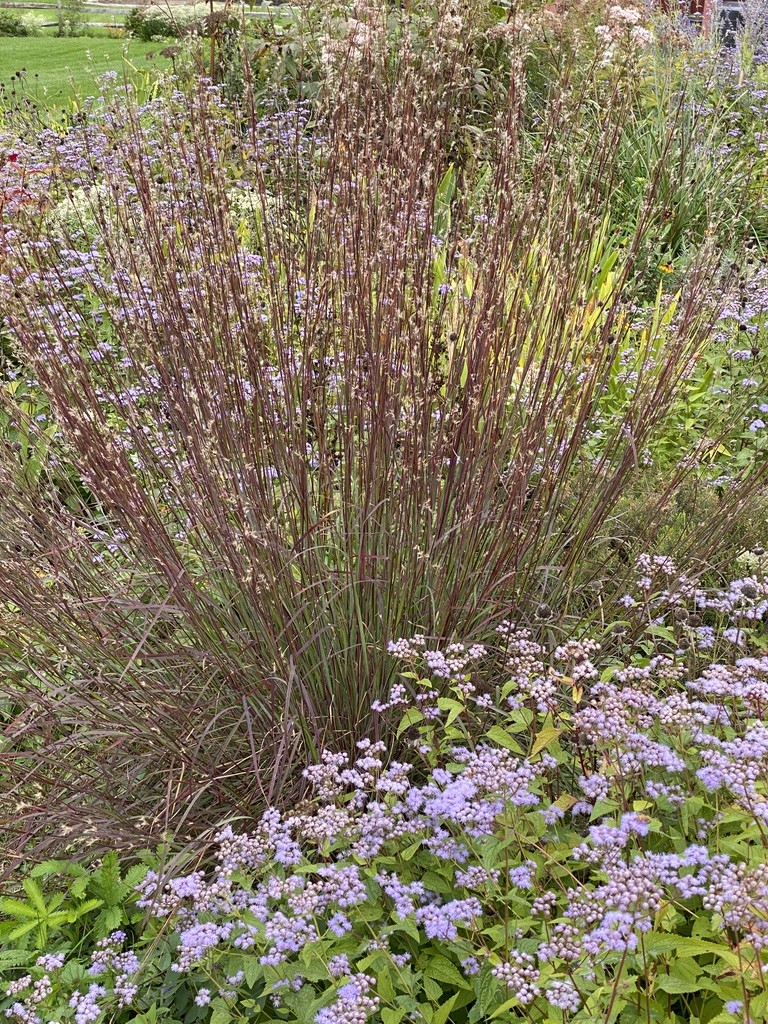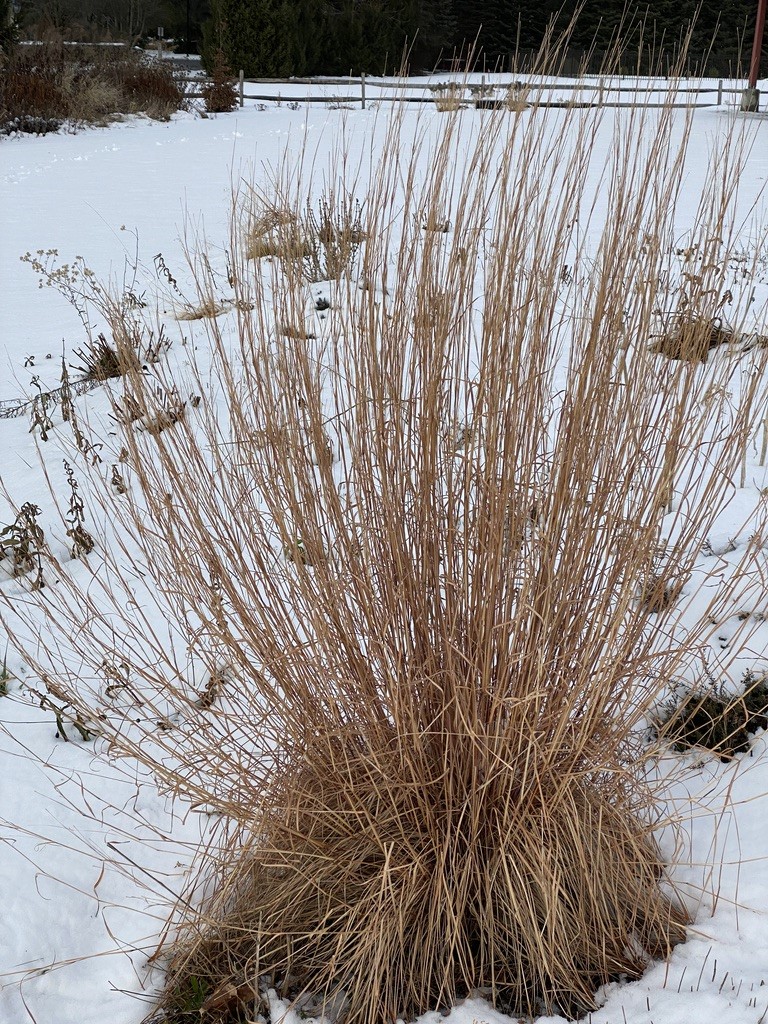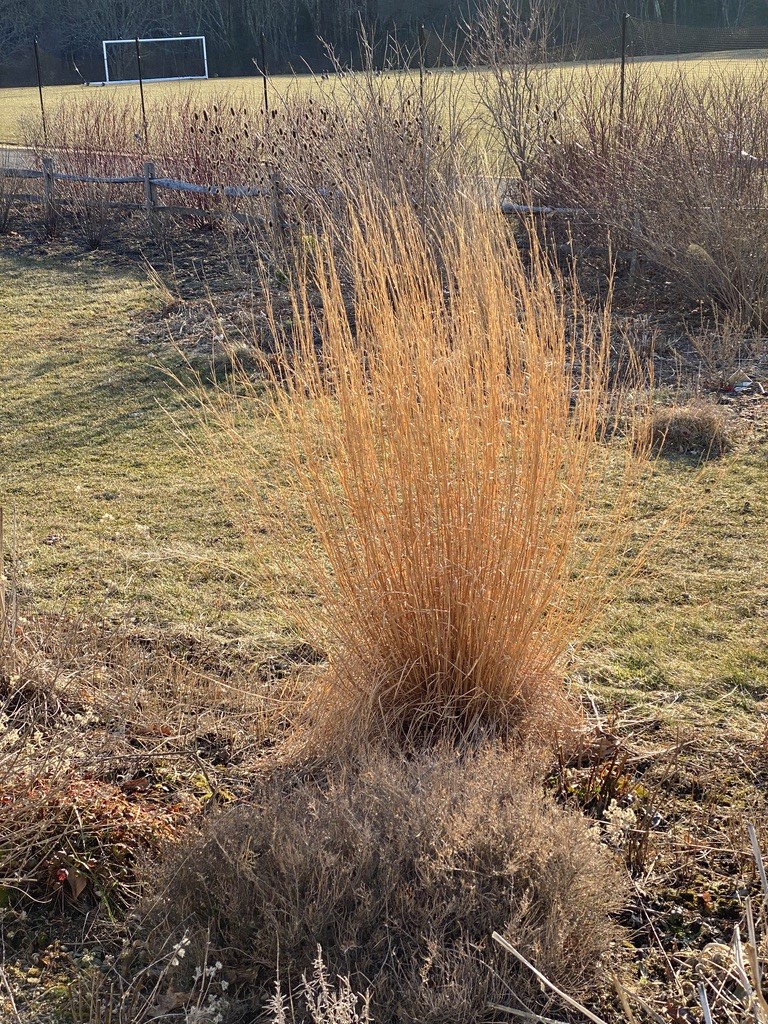
by Catherine Cooper
While I find it hard to pick a single favorite of any plant group, if I were pressed to choose an ornamental grass, I would select little bluestem, Schizachyrium scoparium. It is a warm-season and bunch grass that is native to prairies and forms tidy plants 2-4 feet tall and around 1-2 feet wide. Here in Massachusetts, it can be seen growing wild on open grassland, and due to its drought tolerance, it makes a good choice for low-maintenance gardens. In fact, the most difficult thing about it is the pronunciation of its botanical name – skizz-uh-KEER-ee-um skoe-PAR-ee-um.
It gets its common name from the color of its stems in spring, but by fall this foliage turns a warm, rusty red, which in turn fades to a bleached tan throughout the winter. And this is the quality that gives it my vote, as it really does hold up through winter. It is really resilient, and the cultivar Standing Ovation, which I have growing in my yard, has withstood all the wind and snow that winter and spring have sent its way. I ultimately cut it back in the final week of May, because I could see the new growth emerging, but the stems of this grass looked as good in May as they did in September.
Being a native grass it supports a number of insect species, including various skipper butterflies and grasshoppers, and provides nesting material for birds and certain native bees. Its seed heads also provide winter food for songbirds.



The photos above are courtesy of Catherine Cooper of Weston Nurseries. All rights reserved.
There are several cultivars of this grass. Standing Ovation has sturdy blue-green stems, lightly flecked with purple, and reaches a height of 3-4 feet tall before the foliage turns fiery red and orange in fall. It makes a good companion for late summer blooming perennials. Native perennials that go well with it include rudbeckia, echinacea, helenium, phlox, and solidago.
The Blues, as its name suggests, has pronounced blue/gray stems in summer, which turn dusky purple in fall and then bleach to gold over winter. This is a variety useful for a cool color scheme and can be paired with bearded iris, catmint, lamb’s ear (stachys byzantina) and Russian sage. It too reaches 3-4 feet in height.
One of the newer cultivars of little bluestem is Twilight Zone, and this cultivar is a fabulous subtle combination of blue, lime green and purple. As fall approaches the purple is enhanced, and then will ultimately fade to gold over winter. This variety is a little taller than the other two and looks absolutely stunning when planted with sedum Matrona and scabiosa Flutter Deep Blue.
Smoke Signal is another strongly upright variety, which offers blue/green foliage that turns scarlet and then purplish-red in the fall. Again reaching up to 4 feet in height consider planting it with plants like sedum Sunsparkler Dazzleberry, penstemon Dark Towers and phlox Blue Paradise.
Chameleon is aptly named for the breadth of color change it undergoes during the growing season. Starting off with vertically striped, green and white leaves, with time it takes on increasingly more autumnal hues of pink and purple. Not only is it eye-catching for the pronounced striped variegation, but it reaches a compact 2 feet tall, allowing it to be used in smaller spaces.
Quick Little Bluestem Facts!
🌿 Little Bluestem gets its common name from the blue/green color of the grass
🌿 It is hardy for USDA garden zones 3-9.
🌿 Can grow in almost any soil as long as it drains well. So, no rain gardens!
🌿 Over a dozen beneficial insects feed on Little Bluestem
🌿 The cotton/fluffy seed is eaten by songbirds in the winter
🌿 Little Bluestem is present throughout all southern Canadian Provinces and all 48 Continental United States
🌿 The Scientific Name of Little Bluestem is Schizachyrium scoparium
And if my opinion doesn’t convince you to take a look at little bluestem grass, the Perennial Plant Association has named this grass and its cultivars as the Association’s perennial of the year for 2022.









